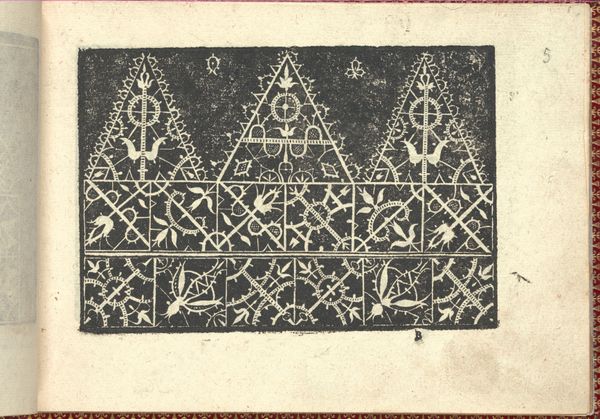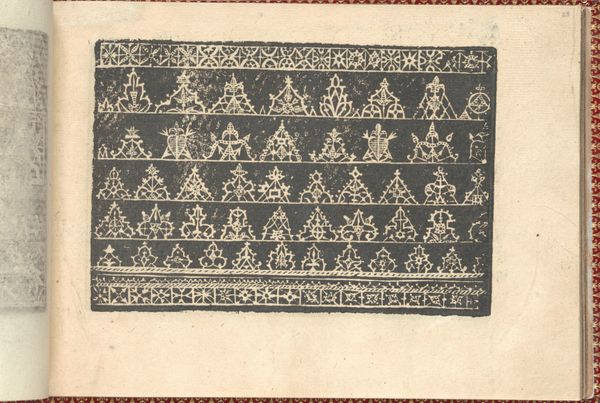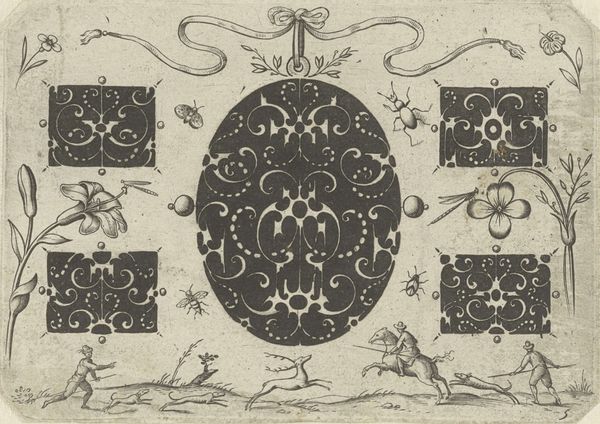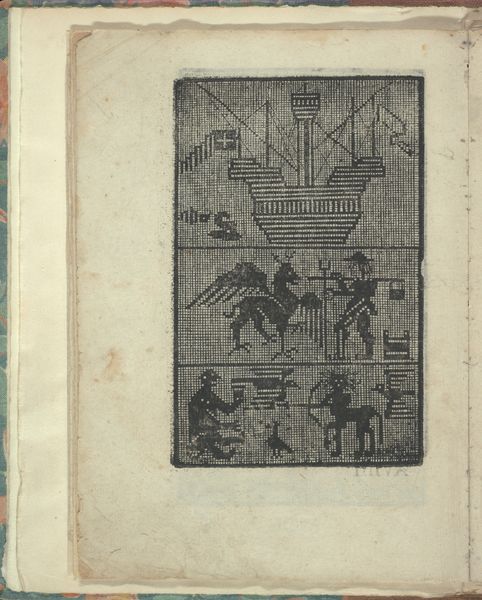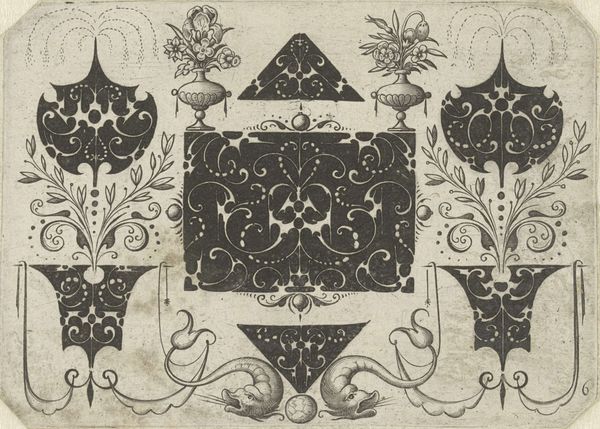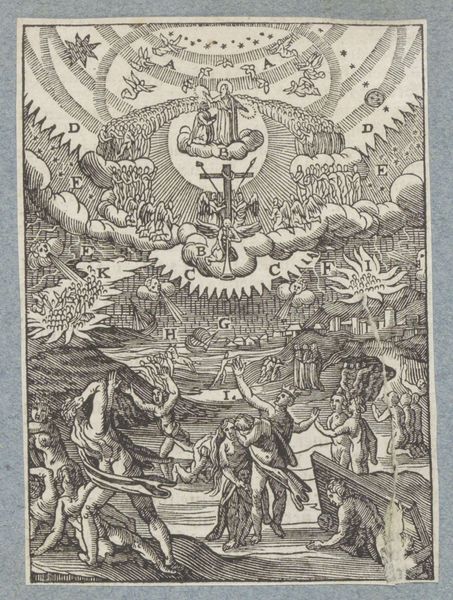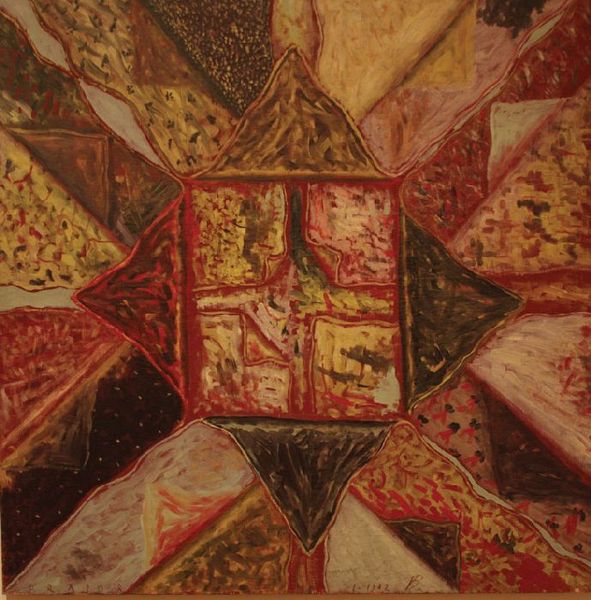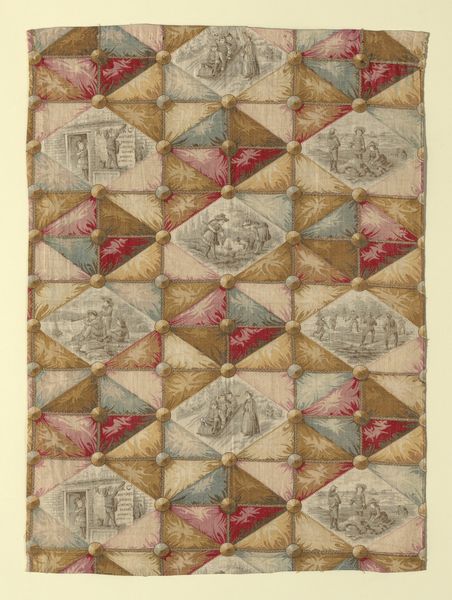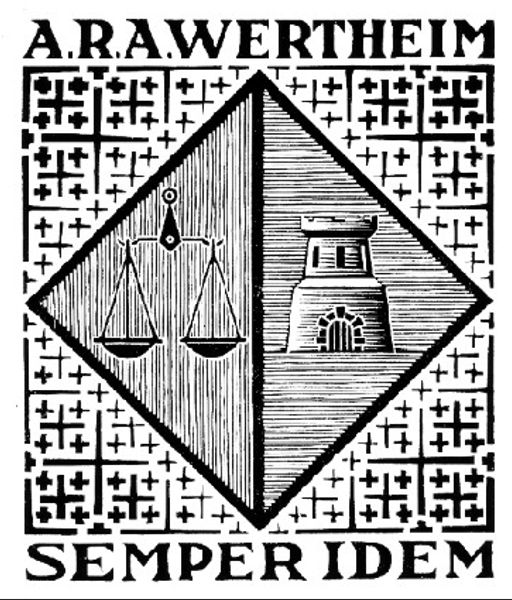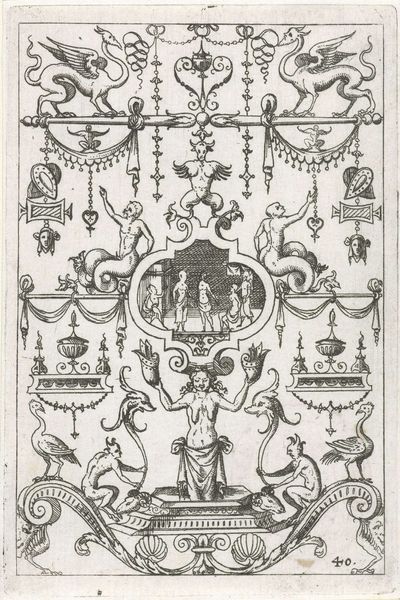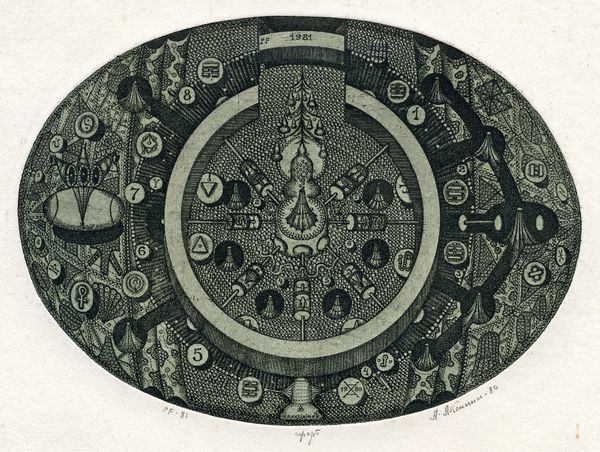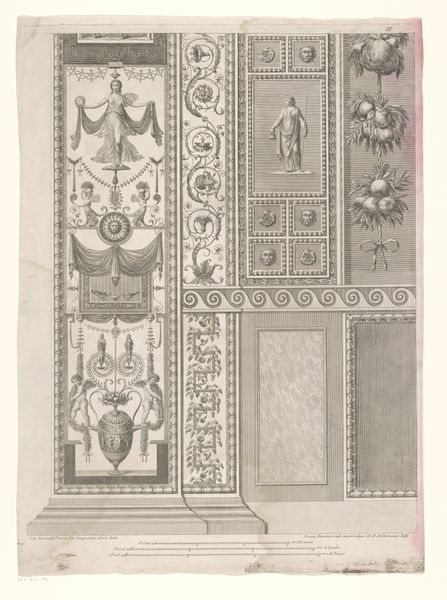
print, etching, textile
# print
#
etching
#
textile
#
ancient-egyptian-art
#
etching
#
text
#
men
#
history-painting
#
decorative-art
Dimensions: L. 98 1/2 x W. 38 inches (250.2 x 96.5 cm)
Copyright: Public Domain
Editor: This textile, titled "Les monuments d'Égypte," made between 1803 and 1813 by the Oberkampf Manufactory, uses print and etching to depict, well, monuments of Egypt. The red monochrome feels… interesting for a textile. What catches your eye? Curator: The means of production. It's fascinating to see Egypt presented as a repeated motif on what would have been a highly-produced textile. What statement do you think this makes about labor, materiality, and consumption at the time? Editor: I hadn’t thought of it that way! It does seem to speak to how exoticism becomes just another commodity through industrial reproduction. So, this shifts Egypt into a fashionable, almost disposable, item? Curator: Exactly. Notice how the 'high art' subject of Egyptian monuments is translated into the 'low art' form of a decorative textile, accessible to a wider consumer base. What implications does that have? Editor: It flattens the cultural significance of the monuments, maybe? And makes one consider how easily other cultures are adapted by European society and made available to those who have the wealth to consume them. Curator: Precisely. We must look at this through the lens of manufacturing – the human labor that went into designing, etching, printing, and distributing this pattern. Editor: I’m struck by how something seemingly decorative can reveal such complex ideas about labor, consumption, and cultural appropriation. Curator: It invites us to question what exactly constitutes 'art' and the social implications of how we manufacture and consume objects.
Comments
No comments
Be the first to comment and join the conversation on the ultimate creative platform.
